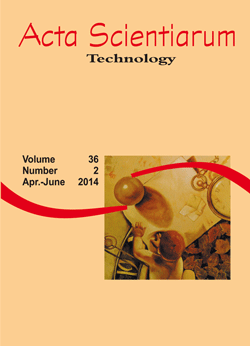<b>Modeling and simulation of an isothermal reactor for methanol steam reforming<b>
DOI:
https://doi.org/10.4025/actascitechnol.v36i2.18850Keywords:
mathematical modelling, methanol, steam reforming, hydrogenAbstract
Due to growing electricity demand, cheap renewable energy sources are needed. Fuel cells are an interesting alternative for generating electricity since they use hydrogen as their main fuel and release only water and heat to the environment. Although fuel cells show great flexibility in size and operating temperature (some models even operate at low temperatures), the technology has the drawback for hydrogen transportation and storage. However, hydrogen may be produced from methanol steam reforming obtained from renewable sources such as biomass. The use of methanol as raw material in hydrogen production process by steam reforming is highly interesting owing to the fact that alcohol has the best hydrogen carbon-1 ratio (4:1) and may be processed at low temperatures and atmospheric pressures. They are features which are desirable for its use in autonomous fuel cells. Current research develops a mathematical model of an isothermal methanol steam reforming reactor and validates it against experimental data from the literature. The mathematical model was solved numerically by MATLAB® and the comparison of its predictions for different experimental conditions indicated that the developed model and the methodology for its numerical solution were adequate. Further, a preliminary analysis was undertaken on methanol steam reforming reactor project for autonomous fuel cell.
Â
Downloads
Downloads
Published
How to Cite
Issue
Section
License
DECLARATION OF ORIGINALITY AND COPYRIGHTS
I Declare that current article is original and has not been submitted for publication, in part or in whole, to any other national or international journal.
The copyrights belong exclusively to the authors. Published content is licensed under Creative Commons Attribution 4.0 (CC BY 4.0) guidelines, which allows sharing (copy and distribution of the material in any medium or format) and adaptation (remix, transform, and build upon the material) for any purpose, even commercially, under the terms of attribution.
Read this link for further information on how to use CC BY 4.0 properly.



















8.png)




